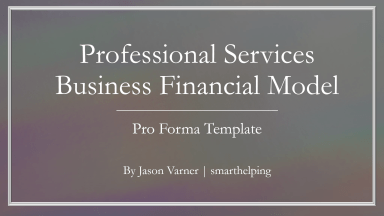
Last version published: 27/12/2023 09:24
Publication number: ELQ-82191-3
View all versions & Certificate

Consultancy / Agency - 5 Year Financial Model in Excel
All the logic needed to build a 5-year financial forecast for a consultancy firm (billable hours or billable days).
Further information
Plan out the growth of an agency that derives revenue from hourly billings by professionals.
A firm with multiple professionals billing out time by the hour.
If the firm does not bill by the hour.


























